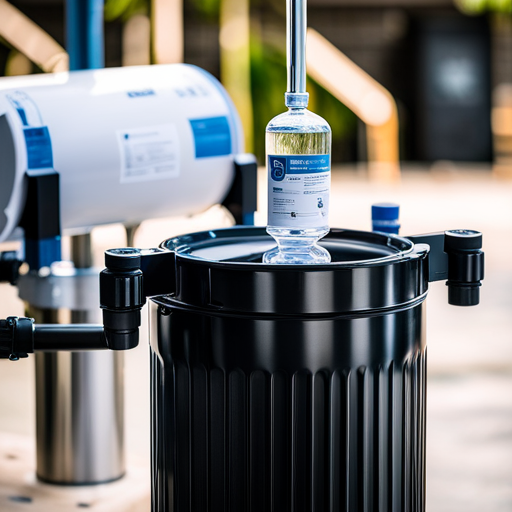Are you concerned about the quality of your drinking water? One way to ensure your water is pure and free from contaminants is by using a reverse osmosis (RO) filter system. However, it’s important to measure the performance of your RO filter to ensure it’s effectively removing impurities and producing clean water.
There are various methods to evaluate the removal effectiveness of an RO filter, including laboratory testing and field instrument readings. TDS, conductivity, pH, and ORP are critical indicators of water quality and RO performance, while recovery percentage and purified water production rate evaluate RO filter performance.
In this article, we’ll explore different ways to measure the performance of an RO filter system and the importance of proper maintenance to maintain drinking water quality. Keep reading to learn how to ensure your RO filter is providing you with pure, clean water.
Key Takeaways
– TDS, conductivity, pH, and ORP are critical indicators of water quality and RO performance.
– Recovery percentage and purified water production rate are important metrics to evaluate RO filter performance.
– Laboratory testing and field instrument readings can be used to evaluate removal effectiveness.
– Proper maintenance procedures for RO filters are crucial to ensure clean and safe drinking water.
Testing Methods
To test the effectiveness of your RO filter system, you can use simple methods such as measuring TDS, conductivity, pH, or ORP, or you can opt for more accurate laboratory testing to evaluate contaminant concentration and removal efficiency.
TDS measurement is a quick and easy way to estimate the concentration of dissolved solids in your water, which can indicate the effectiveness of your RO filter. However, it’s important to note that TDS readings can be influenced by factors such as temperature and the type of dissolved solids present, so it may not always be an accurate measure of contaminant concentration.
If you suspect bacterial contamination in your water, it’s important to handle samples carefully to avoid introducing additional bacteria. Use sterile glassware provided by the laboratory and purge the faucet for several minutes before collecting the sample to minimize the risk of contamination.
Once you have collected your water sample, you can either send it to a laboratory for analysis or use a field test kit to check for the presence of bacteria. Keep in mind that field test kits may not be as accurate as laboratory testing, so it’s always best to err on the side of caution and get a professional analysis done if you suspect bacterial contamination.
Evaluating Water Quality
You can evaluate the quality of your water by using TDS meters or relying on your senses of taste and smell. The lower the TDS reading, the purer your water is, but TDS measurement accuracy can be affected by temperature, so it’s important to follow the manufacturer’s instructions for calibration.
Bacterial contamination can be a concern when evaluating water quality. It’s important to use sterile glassware and avoid touching the inside of the container when collecting water samples for laboratory testing.
If you’re relying on taste and smell to evaluate your water, it’s important to note any unusual or unpleasant odors or tastes, which could indicate bacterial contamination. If you suspect your water is contaminated, it’s best to get it tested by a laboratory to ensure your health and safety.
Maintaining RO Filters
Maintaining your reverse osmosis filter system is crucial for ensuring clean and safe drinking water. To maintain your RO filter, you need to follow proper cleaning procedures to prevent bacterial growth and membrane fouling.
You should replace the RO membrane periodically to maintain effective removal of contaminants and prevent clogging. Cleaning your RO filter involves flushing the system regularly to remove any buildup of contaminants or debris.
You should also sanitize the system periodically to prevent bacterial growth. To replace the RO membrane, you need to first shut off the water supply and release any built-up pressure. Then, remove the old membrane and replace it with a new one.
Following these maintenance procedures will ensure that your RO filter system continues to provide clean and safe drinking water for you and your family.
Conclusion
Congratulations! You’ve learned various methods to measure the performance of your RO filter system. By evaluating water quality indicators such as TDS, conductivity, pH, and ORP, you can ensure that your filter effectively removes contaminants and produces pure drinking water.
Recovery percentage and purified water production rate are also important metrics to evaluate your RO filter performance. Proper maintenance of your RO filter system is crucial to maintain water quality.
Regularly changing filters, sanitizing the system, and monitoring water quality indicators can help prevent clogs, bacteria growth, and other issues that can compromise the effectiveness of your filter. By following these guidelines, you can ensure that your RO filter system operates at optimal performance and produces pure, safe drinking water for you and your loved ones.
